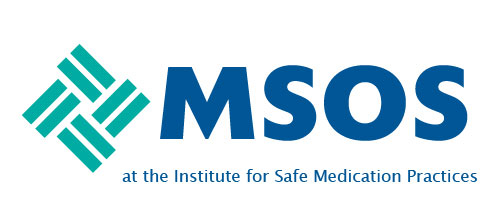Feed aggregator
[Phoenix, Arizona] – [12/22/25] – Modern Warrior is voluntarily recalling all lots of Modern Warrior Ready, a dietary supplement sold directly to consumers, after regulatory testing identified the presence of undeclared ingredients, including tianeptine, 1,4-DMAA, and aniracetam..Tianeptine can c
Organ Recovery Pack Correction: AVID Medical Issues Correction for Medical Convenience and Organ Recovery Kits
AVID is removing bags from Organ Recovery and Medical Convenience Kits due to the bags being made of non-medical grade Poly and lacking intact seals.
Anthony Trinh, 123Herbals LLC (123HERBALS.COM) Issues Nationwide Recall of Silintan Capsules Due to the Presence of Undeclared Meloxicam
Rosemead, CA, ANTHONY TRINH, 123herbals LLC is voluntarily recalling all lots of Silintan capsules to the consumer level. FDA analysis has found the product to be tainted with meloxicam. Meloxicam, is an approved Nonsteroidal Anti-Inflammatory Drug, (NSAID) indicated for management of osteoarthritis
Intravascular PICC Catheter Recall: Bard Removes PowerPICC Intravascular Catheters
This communication is part of the Communications Pilot to Enhance the Medical Device Recall Program
Infusion Pump Software Recall: Baxter Removes Sigma Spectrum Infusion System Platforms
This communication is part of the Communications Pilot to Enhance the Medical Device Recall Program
Diagnostic Intravascular Catheter Recall: Conavi Removes Novasight Hybrid Catheters
This communication is part of the Communications Pilot to Enhance the Medical Device Recall Program
Esophageal pH Monitoring Capsule Recall: Medtronic and Given Imaging Remove Bravo CF Capsule Delivery Devices
This communication is part of the Communications Pilot to Enhance the Medical Device Recall Program
Aspiration System Correction: Calyxo Updates Use Instructions for CVAC Aspiration Systems
This communication is part of the Communications Pilot to Enhance the Medical Device Recall Program
Infusion Pump Recall: Fresenius Kabi Removes Ivenix Large Volume Pumps
Some Ivenix LVP Primary Administration Sets were assembled with the drip chamber and Luer Lock components in reversed positions, potentially leading to clinical complications
Custom Surgical Pack Recall: Alcon Removes Custom Pak Ophthalmic Procedure Packs
Alcon recalls Custom Pak Ophthalmic Procedure Packs due to incomplete seals that may compromise sterility. Check lot numbers, recall instructions.
Intravascular Administration Set Recall: ICU Medical Removes IV Gravity Burette Set
ICU Medical removes IV Gravity Burette Set due to the burette component missing an internal shut-off valve intended to stop fluid flow.
Anesthesia System Correction: GE HealthCare Updates Use Instructions for CareStation Anesthesia Systems
GE HealthCare issues updated use instructions for certain Carestation 600 and 700 series Anesthesia Systems
Continuous Glucose Monitoring Software Correction: Dexcom Issues Correction for Dexcom G6 and G6 Pro Software
A defect was discovered in the Dexcom G6 and G6 Pro Android US CGM App version 1.15.0 that may cause the app to shut down unexpectedly.
Gold Star Distribution Inc., Issues Recall of Certain FDA-Regulated Products in Three States Including Drugs, Devices, Cosmetics, Human Foods, and Pet Foods
Gold Star Distribution, Inc. (Gold Star or “the Company”) is recalling all FDA regulated products listed in this press release due to the presence of rodent and avian contamination.
Catheter Mount Recall: Draeger Removes ErgoStar Catheter Mounts
Drager is removing affected ErgoStar Cather Mounts due to cracks in the hose.
Endovascular Graft Recall: Cook Medical Removes Zenith Alpha 2 Thoracic Endovascular Graft
Cook Medical is removing certain ZENITH ALPHA 2 THORACIC ENDOVASCULAR GRAFT proximal components because PTFE scrapings may enter the stent graft during deployment.
System Correction: IMPRIS Imaging Inc Issues Correction for IMRIS Neuro III-SV
IMPRIS corrects IMRIS Neuro III-SV models due to the potential of ice blockage in the helium venting pipe
MRI System Correction: Siemens Healthineers Issues Correction for 3 Tesla MRI Systems
Siemens Healthineers is correcting 3 Tesla MRI systems including MAGNETOM and BioGraph mMR due to the potential for ice blockage in the magnet venting system
Early Alert: Convenience Kit Needle Issue from Integra LifeSciences
Integra LifeSciences is removing certain lots of Microsensor and Cerelink ICP Kits with potential corrosion stains on the included Tuohy Needle.
Infusion Pump Correction: Baxter Issues Correction for Novum IQ Large Volume Pumps
This communication is part of the Communications Pilot to Enhance the Medical Device Recall Program
